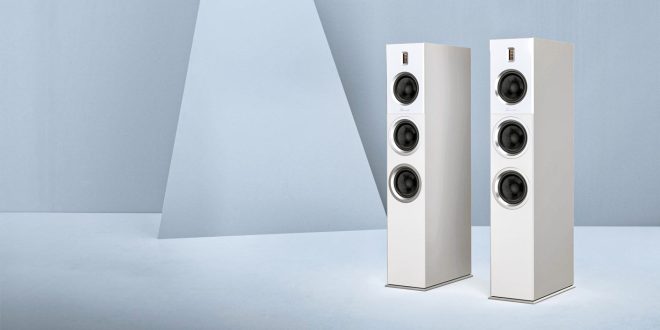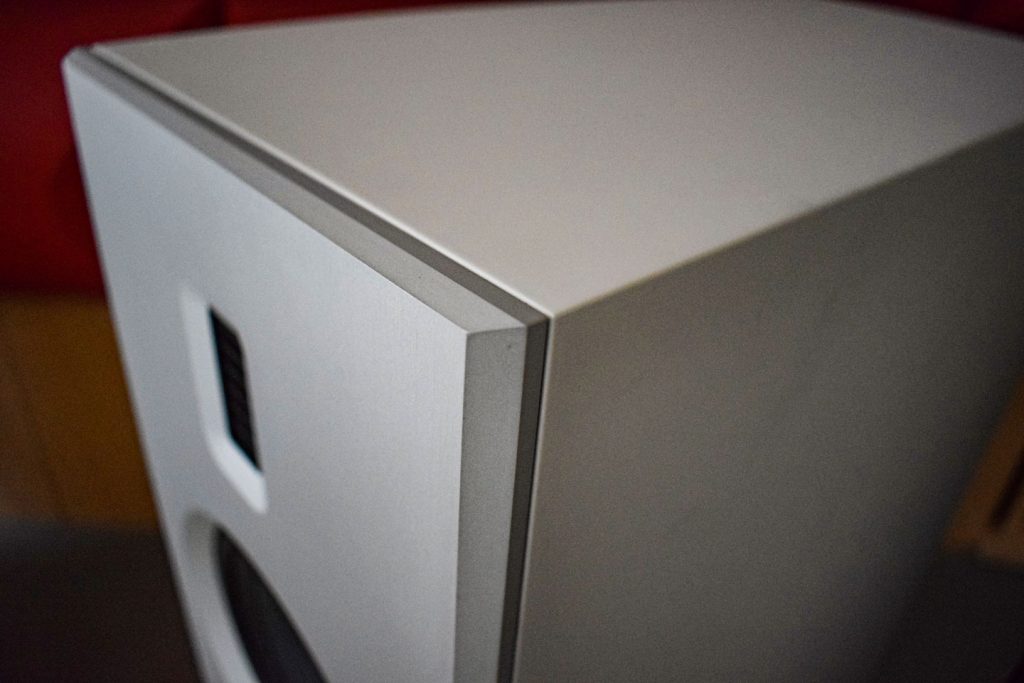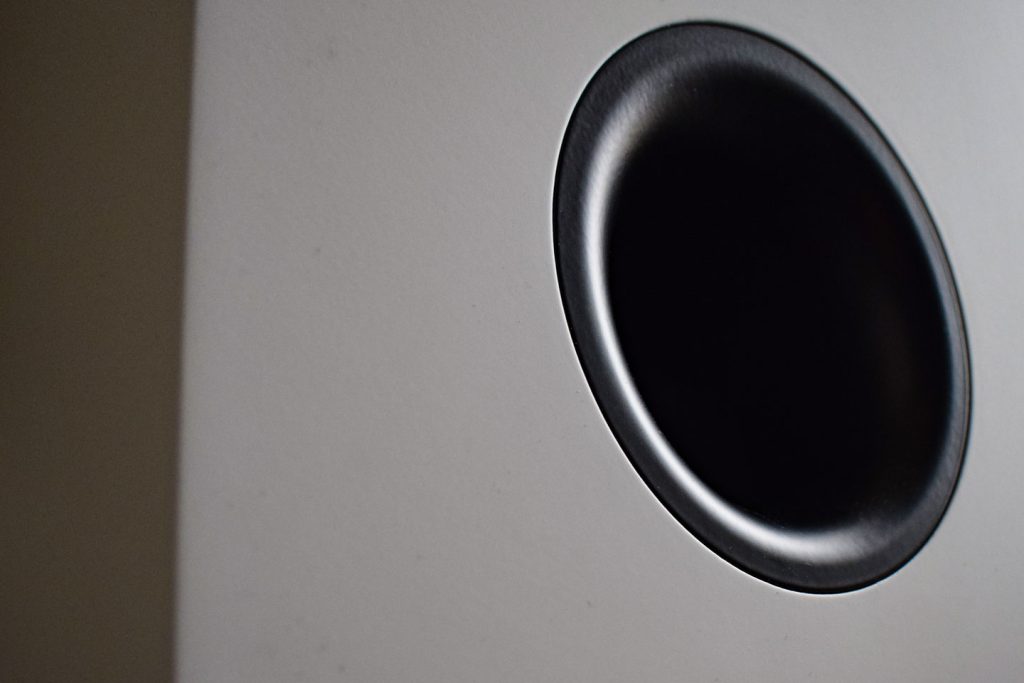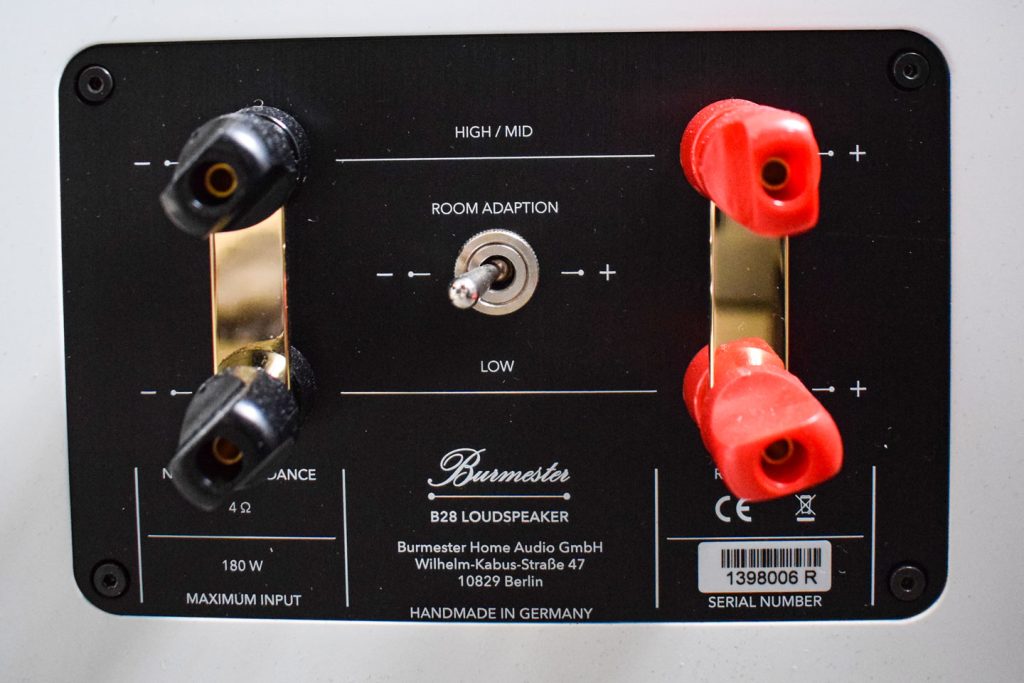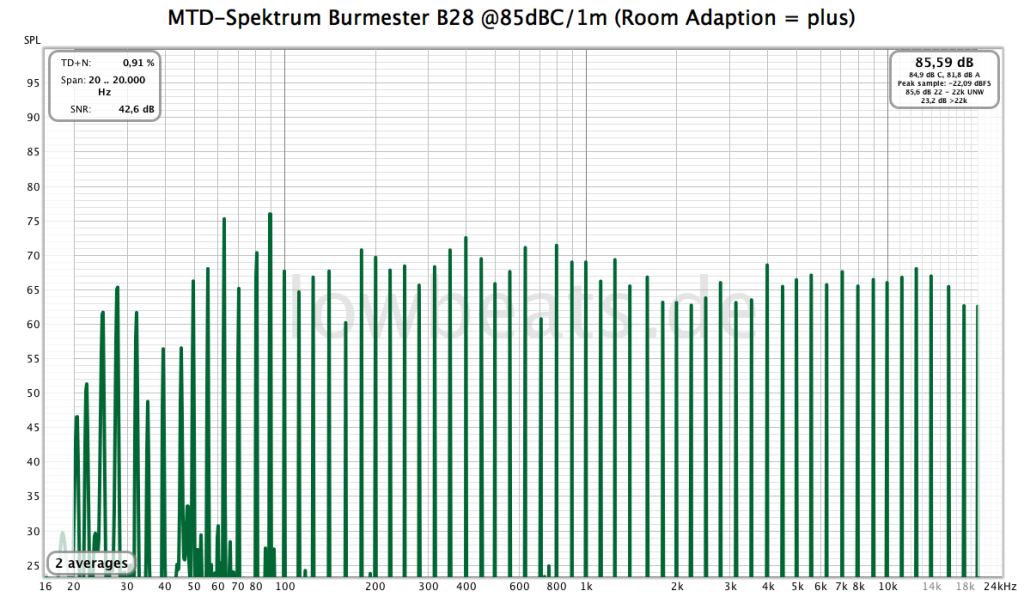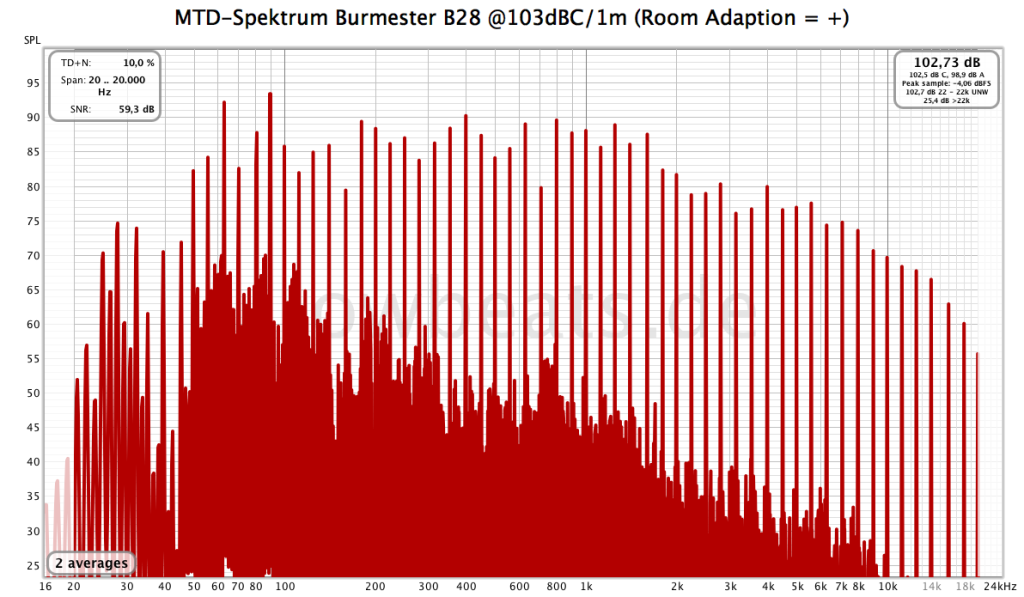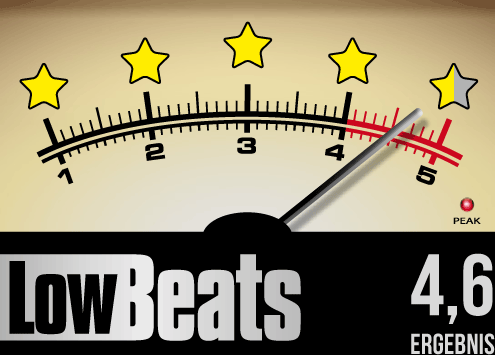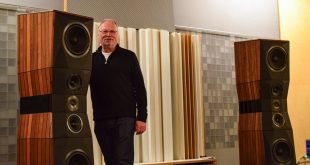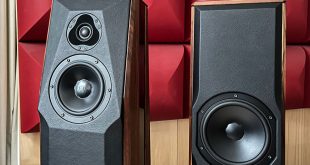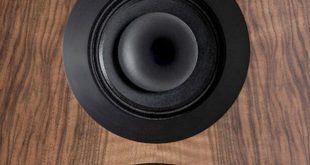These days, Berlin’s flagship high-end manufacturer Burmester is always good for a surprise. On the electronics side, they present power amplifiers and amplifiers (e.g. 218 and 232) that make the competition pale with envy, and on the loudspeaker side, with the B28, a representative of the 15,000 euro league that puts almost all the established competition in this class in the shade. We tested this transducer gem for a few weeks.

If you look at Burmester’s price list, you quickly find yourself in the same range as iconic sports car manufacturers. In other words: you can get really cheap elsewhere. Conversely, the question naturally arises: is such a high-end manufacturer in a position to be competitive in areas that are still affordable? Or do you recognize smears?
The Burmester B28…
…with its pair price of 15,700 euros is still in a range that is now rather normal in upscale hi-fi and which is probably traded as entry-level at Burmester. Nevertheless, the slim 3-way Strandbox shows at every corner that it comes from the most noble of all German stables. First of all, there is the sparkling clean design. A housing made of cleanly lacquered or veneered MDF with a solid metal front. The high rigidity of the metal front allows the drivers to be firmly attached. The MDF usually used in the manufacture of loudspeakers is – no matter how strong – more yielding and usually only second best in terms of precision in reproduction…
But just how high Burmester’s standards really are with the B28 becomes clear when you look at the crossover. The circuit board – neatly soldered and cleverly distributed according to electromagnetic aspects – contains exclusively components from the high-end supplier Mundorf. It is the antithesis to the often hand-wired simple crossovers of many small audiophile suppliers.
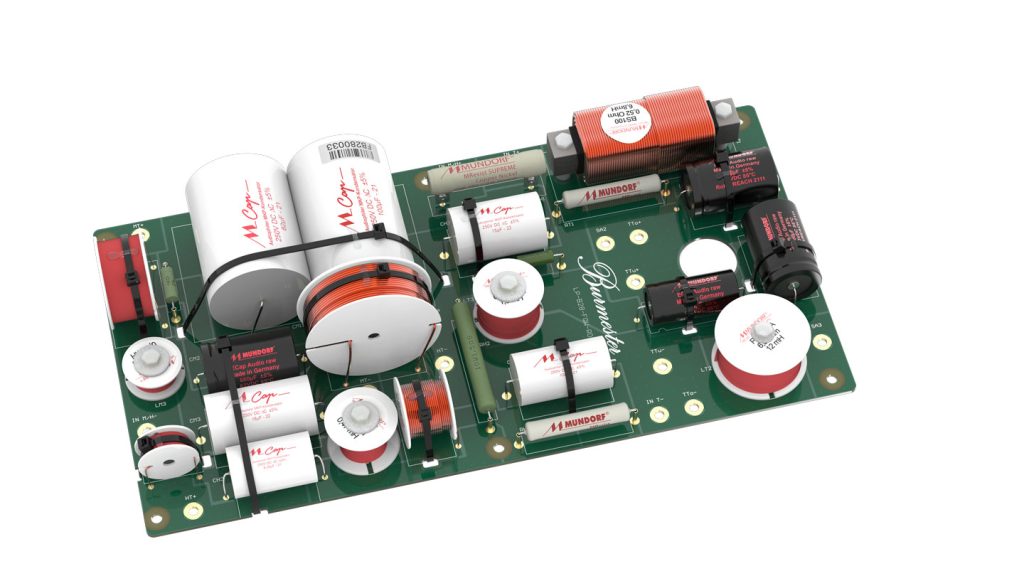
But the graphics of the interior design also underline the fact that everything here has a solid foundation. The housing, which is mainly made of MDF panels (with the exception of the metal baffle), is reinforced in many places and has a very solid design: 37 kilos add up on the scales. And then it’s the little things that reveal the great seriousness here: Like the bass reflex tube, for example, which is quietened by a layer of insulating wool attached to the outside. Or the selective damping of the housing. If too much damping material is used, the bass response will quickly become thin and muddy.
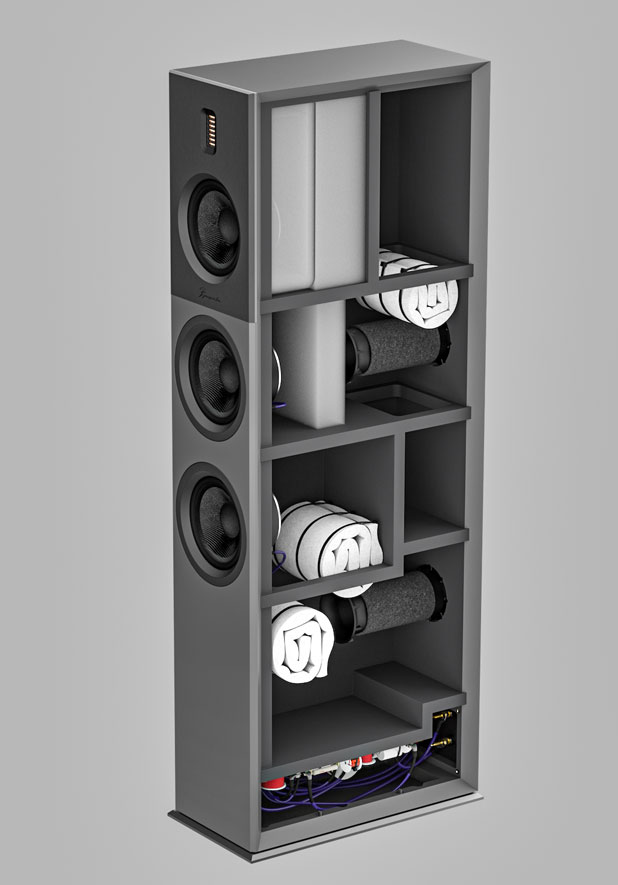
The 3-way floorstanding speaker is equipped with Burmester’s AMT tweeter, already familiar from the B38, and three 17-centimeter bass-midrange drivers with glass-fiber cones. The three may look like triplets, but the midrange driver is actually different because it is designed for its operating range between 150 and 2,500 hertz: The cone mass is lower, the voice coil shorter. This makes it easier for the oscillating system to follow the impulses even faster.
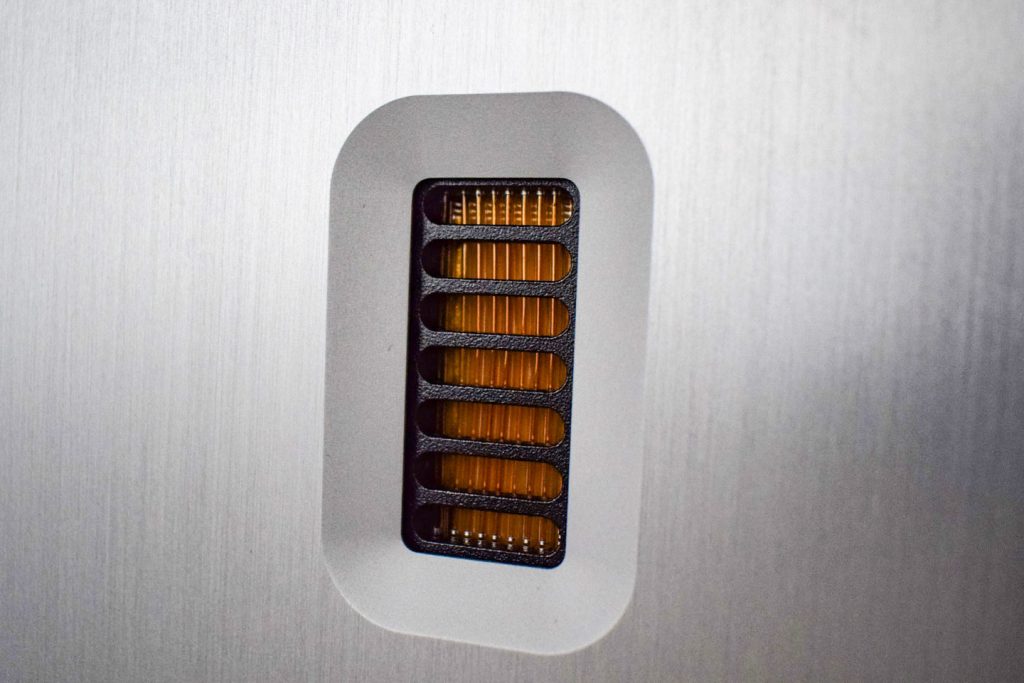
Practice:
The optimal setup in the LowBeats listening room was completely problem-free. Because the B28 produces a precisely tuned bass range without any significant overboosting. The foam plugs supplied to seal the bass reflex tubes are also helpful – just in case it gets really boomy. If, on the other hand, it sounds a little too thin, the Burmester developers have built in a small bass boost: If you set the toggle switch on the terminal to the “+” position, a discreet 2 decibels are added in the range below 120 hertz. In any case, I very quickly found the optimum position and with a distance of 40 centimeters from the rear wall, it was by no means space-consuming.
The connected amplifiers can also be used without hesitation: The impedance of the B28 is always above the DIN specification of 3.2 ohms and the phase is pleasantly flat. So you don’t have to reach for one of the ore stable Burmester amps to achieve a formidable result here. Incidentally, I had my best musical hours with the B28 with the A2 from Soulnote, an integrated amplifier for 7,000 euros.
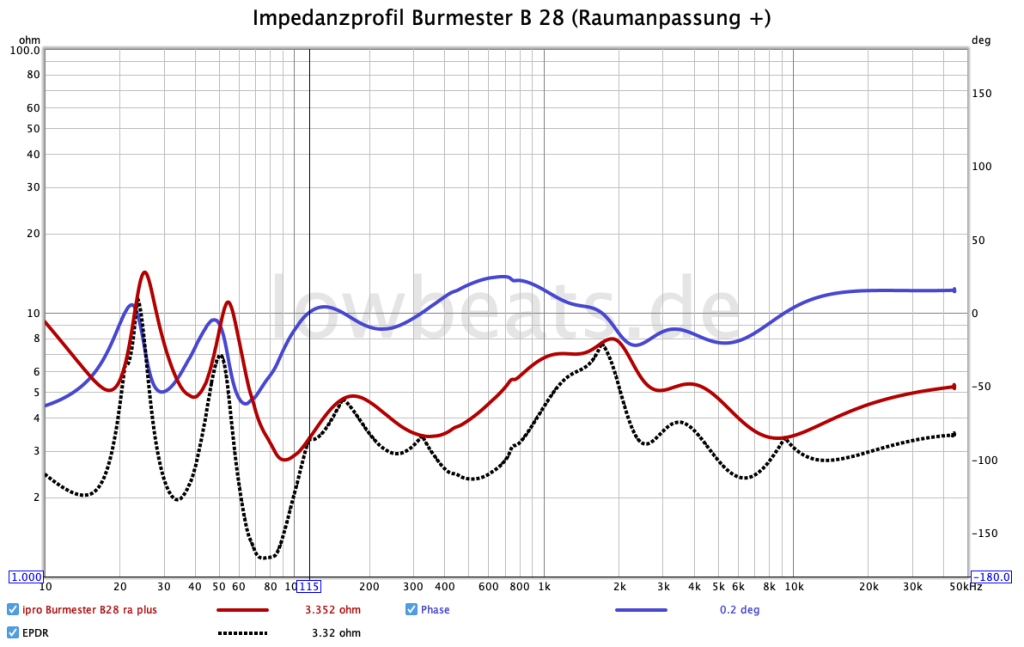
The level stability of the B28 corresponds to what you can get out of two 17 basses today (usually it is the bass that limits the maximum level). In this respect, the 103 dB permanent and 115 dB short-term maximum levels are absolutely appropriate for the class and size. The 200 watts (into 4 ohms) of the Soulnote A2 were therefore well proportioned.
B28
Hearing test:
The B28 is one of the few loudspeakers that immediately captivates the listener. The bass has juice and power, the mid-high range is incredibly precise and open, but it never gets tiring. There are still many hi-fi fans who believe that a classic cone midrange driver should not be combined with such a “fast” tweeter as an AMT. They will be completely refuted with the B28 at the latest. Because the B28 achieves this very open, very grippy play completely seamlessly and finely. Our latest audiophile album tip may serve as an example here: “Desert Dream” by Tiwayo. How fine and harmonious the singer’s voice came across, how thrillingly accurate the slide of the fingers over the strings was reproduced – great. During its stay in the LowBeats editorial office, the B28 had to prove itself against many speakers in its class. For example, against the Perlisten S5t, which – with regard to its home theater qualities – is a real bundle of energy and reproduces bass very dryly, but the mids are also very clear and open.
The B28 didn’t show quite the same stupendous energy, but it was much juicier (but still precise) in the bass range and remained finer overall and even more precise and full-bodied in the micro-details.
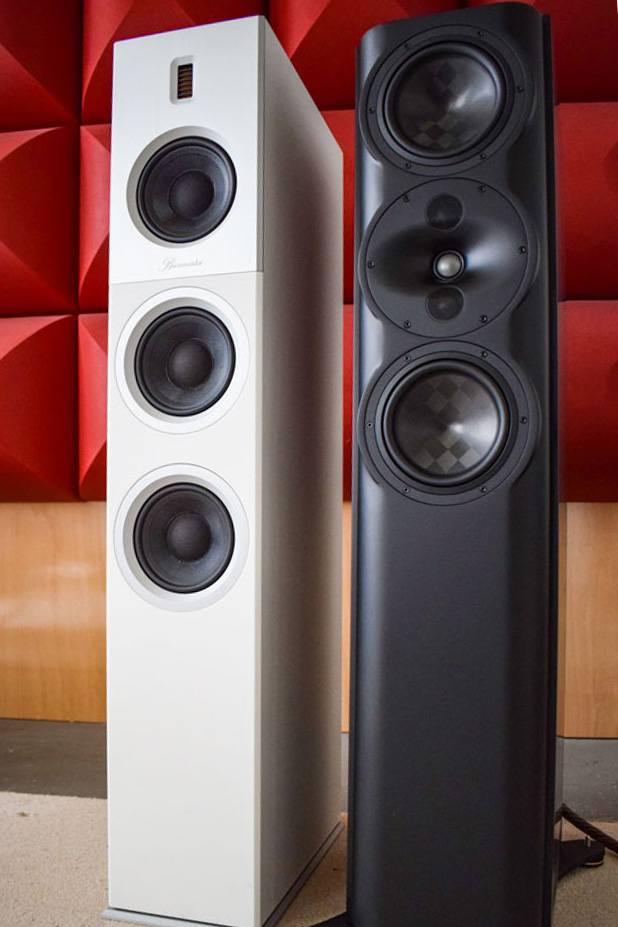
Perlisten was not the only competitor that the B28 had to deal with. There were also the Fyne Audio F702, the Totem Acoustic Wind and the Piega Coax 611 – all floorstanding speakers in this class that clearly have their merits. With its power, the Fyne Audio dynamically plays everything against the wall – the Burmester is not spared the same fate. But the B28 simply sounds more precise, grippier and finer – and therefore even more realistic.
When comparing the Totem Acoustic Wind with the B28, I don’t bother with the comparison of the American road cruiser versus the Porsche 911, although it would have been a good fit here. The Canadian sounds much richer and fuller, especially in the lower registers. It lacks the gripping element of the B28, this openness and precision that makes the B28 an experience in almost every shot. What the “Wind” does exceptionally well, however, is the generous spaciousness with which it quickly captivates the listener. At this point, however, I must point out that the B28 also knows how to advertise itself with an absolutely credible and corporeal image…
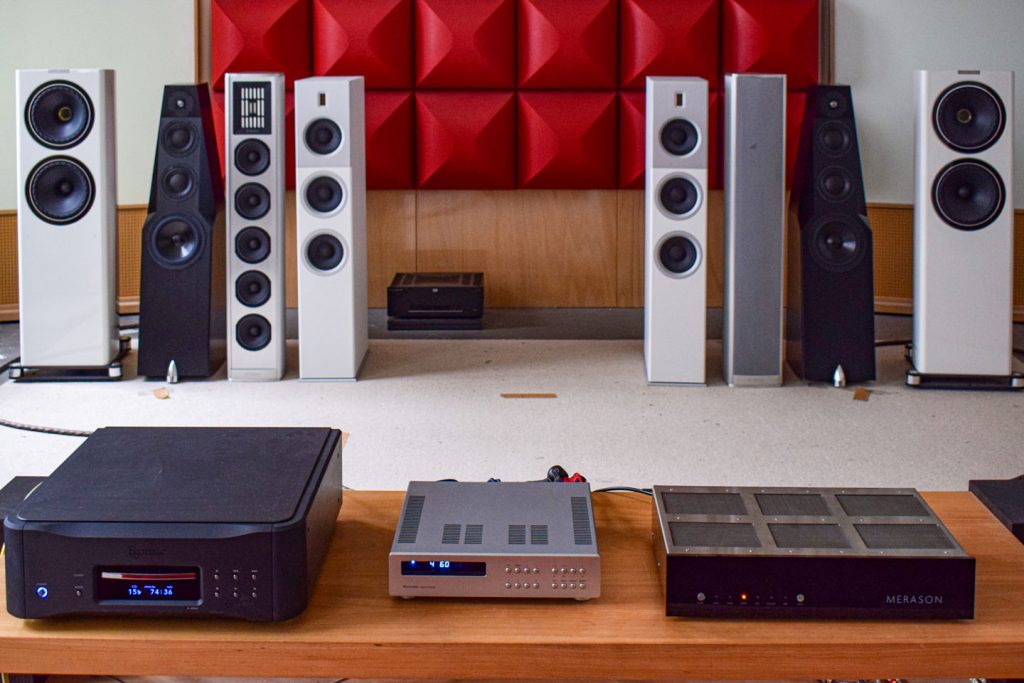
The Piega Coax 611 is undoubtedly the toughest opponent for the B28 in this class. Not only because the 611 also has an outstanding finish thanks to its aluminum housing, but also because the new coaxial ribbon from the Swiss is, in my opinion, a real sensation in terms of homogeneous fine resolution. And now we have an incredibly fine, uninterrupted mid-high range with a perfectly integrated slim and “fast” bass (Piega) on the one hand and an almost equal openness and precision on the other, albeit garnished with a somewhat richer bass and greater liveliness (Burmester). And that could also swing the pendulum in the B28’s favor: The Berliner has a lot more to gain in the maximum level contest. So if you like to listen to live recordings at (almost) original levels, the B28 also offers more in this respect.
Conclusion Burmester B28
Because we have tested many relevant floorstanding speakers in this class over the past six months, the verdict is well-founded: Anyone who can imagine buying floorstanding speakers in the 15,000 euro range will definitely not be able to avoid a listening appointment with the Burmester B28. To my ears, it is the best all-round offering under 20,000 euros in terms of sound quality, and is also outstandingly well made and electrically undemanding. Result: Straight A, outstanding.
Rating
Sound QualityUsabilityBuild QualitySummary |
| The rating always refers to the respective price category. |
| | Tidy, confident, impulsive and clean sound |
| | Perfect workmanship |
| | Electrically undemanding |
| | Discreetly adjustable bass |
Distribution:
Burmester Audiosysteme GmbH
Wilhelm-Kabus-Str. 47
10829 Berlin
www.burmester.de
Price (manufacturer’s recommendation):
Burmester B28: 15,700 euros
Teammates and opponents:
More about Burmester:
Test turntable Burmester 217
Test Burmester 175: Turntable in a league of its own
Test floorstanding loudspeaker Burmester B38: the arrow into our heart
Test Burmester B18 – luxury floorstanding speaker with bass extension
Mercedes Maybach Pullman with Burmester 3D
Technical data
| Burmester 28 | |
|---|---|
| Concept: | passive floorstanding speaker, bass reflex |
| Fitting: | HT: 1 x AMT, MT: 1 x 17 cm, TT: 2 x 17 cm |
| Cut-off frequencies: | 150 / 2,400 Hertz |
| efficiency: | 88.3 dB (2.83 volts/meter) |
| Max. Sound pressure (duration / short term): | 103 / 115 decibels |
| Minimum recommended power for max. level: | >130 watts |
| Versions: | black, white, medium gray and American walnut |
| Weight: | 37.0 kilos |
| Dimensions (W x H x D): | 22.3 x 114.5 x 46.5 cm |
| All technical data | |



